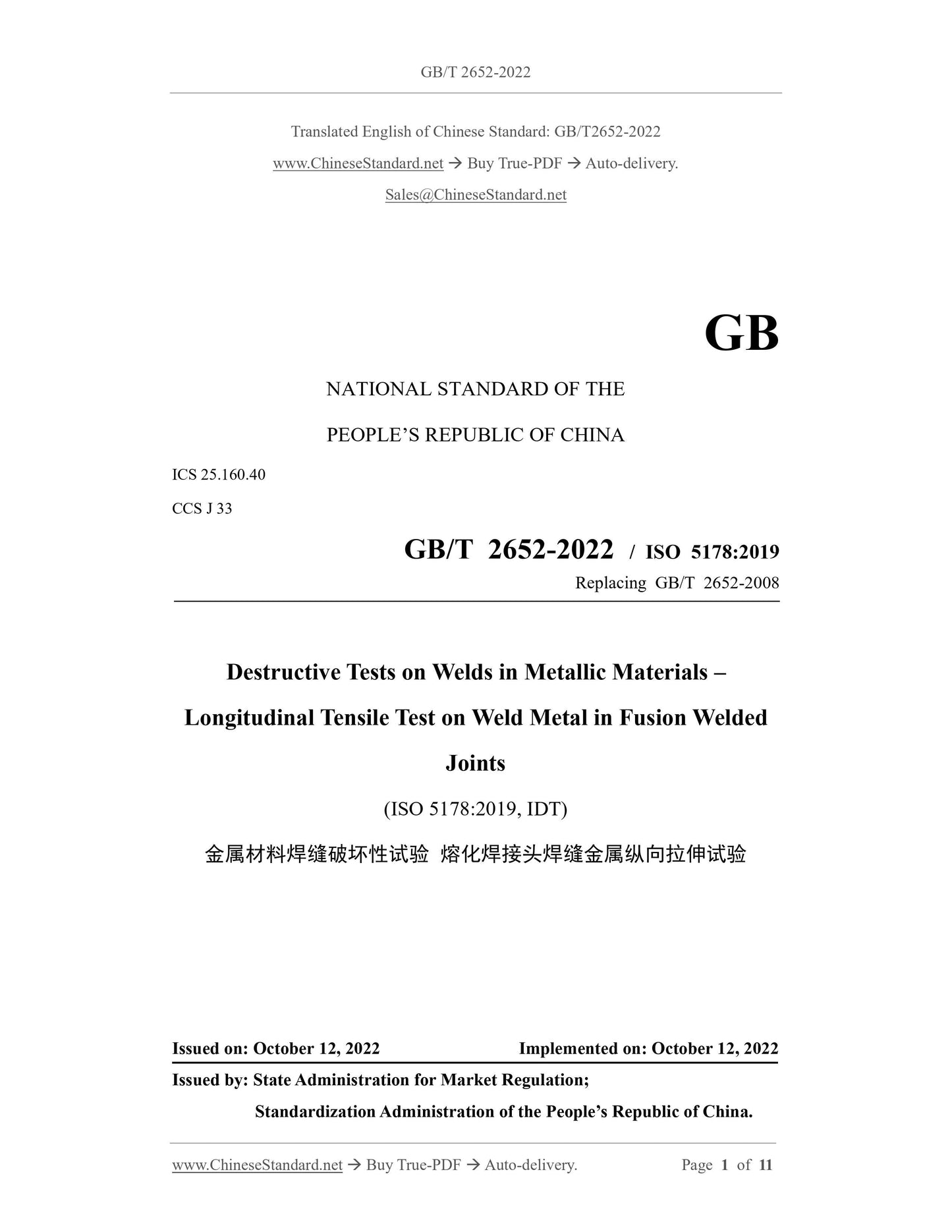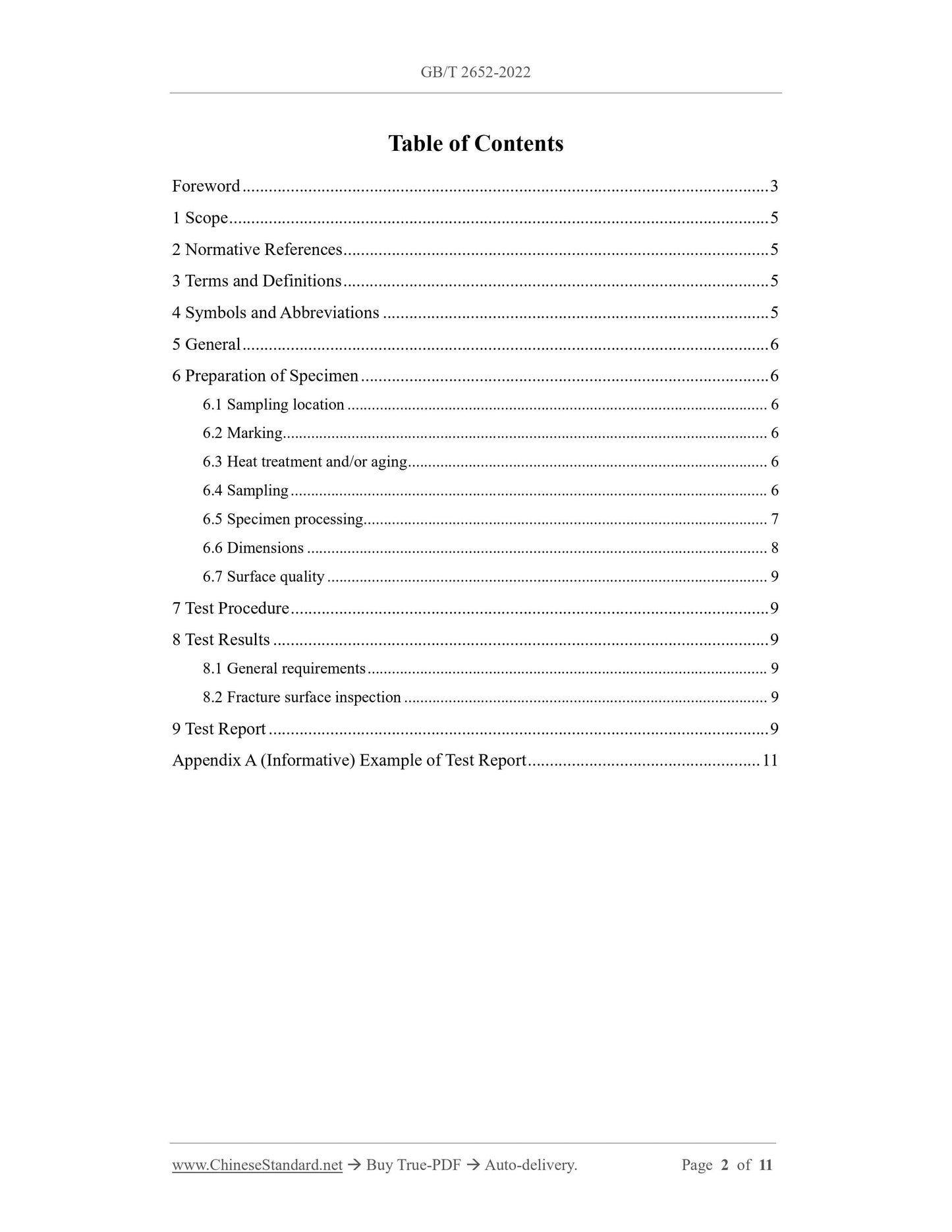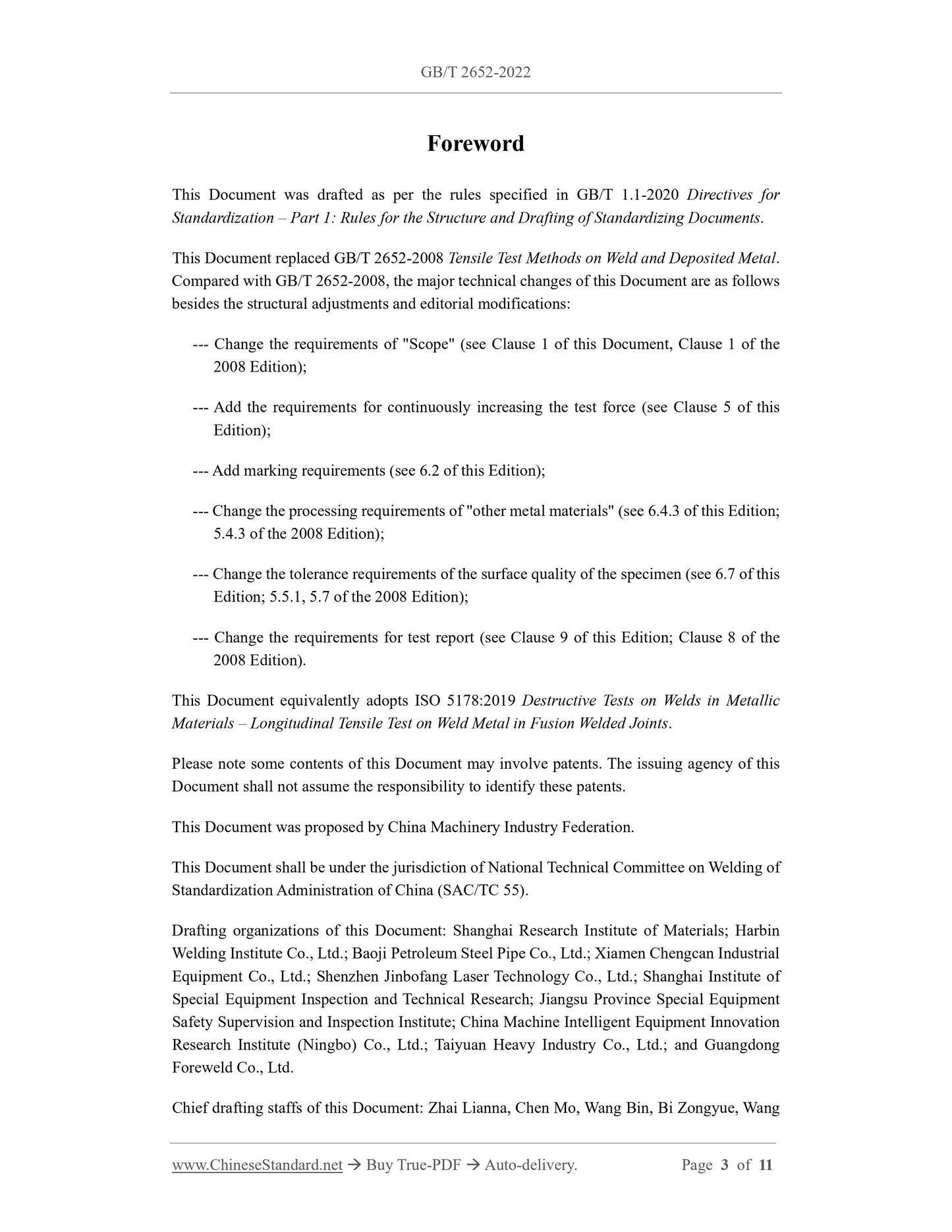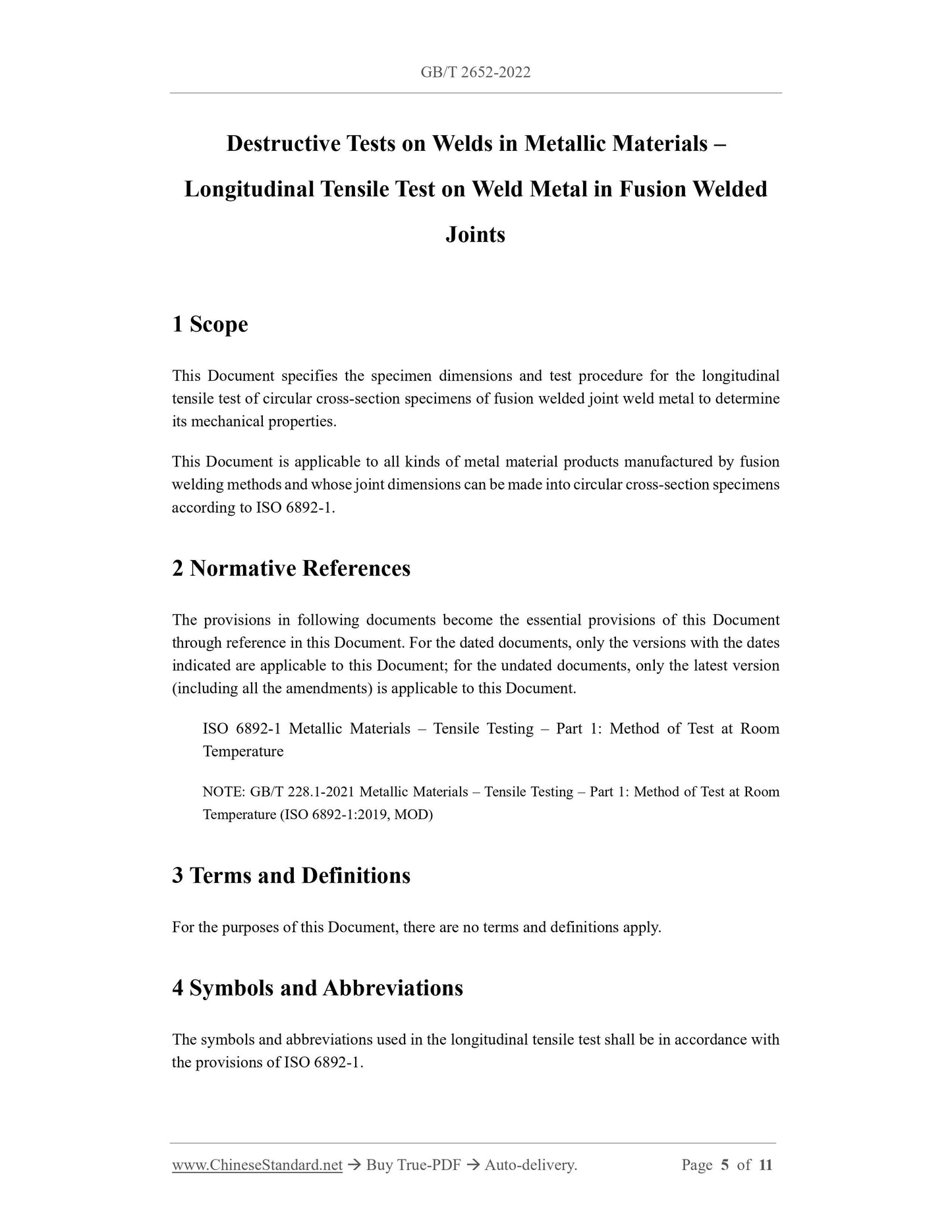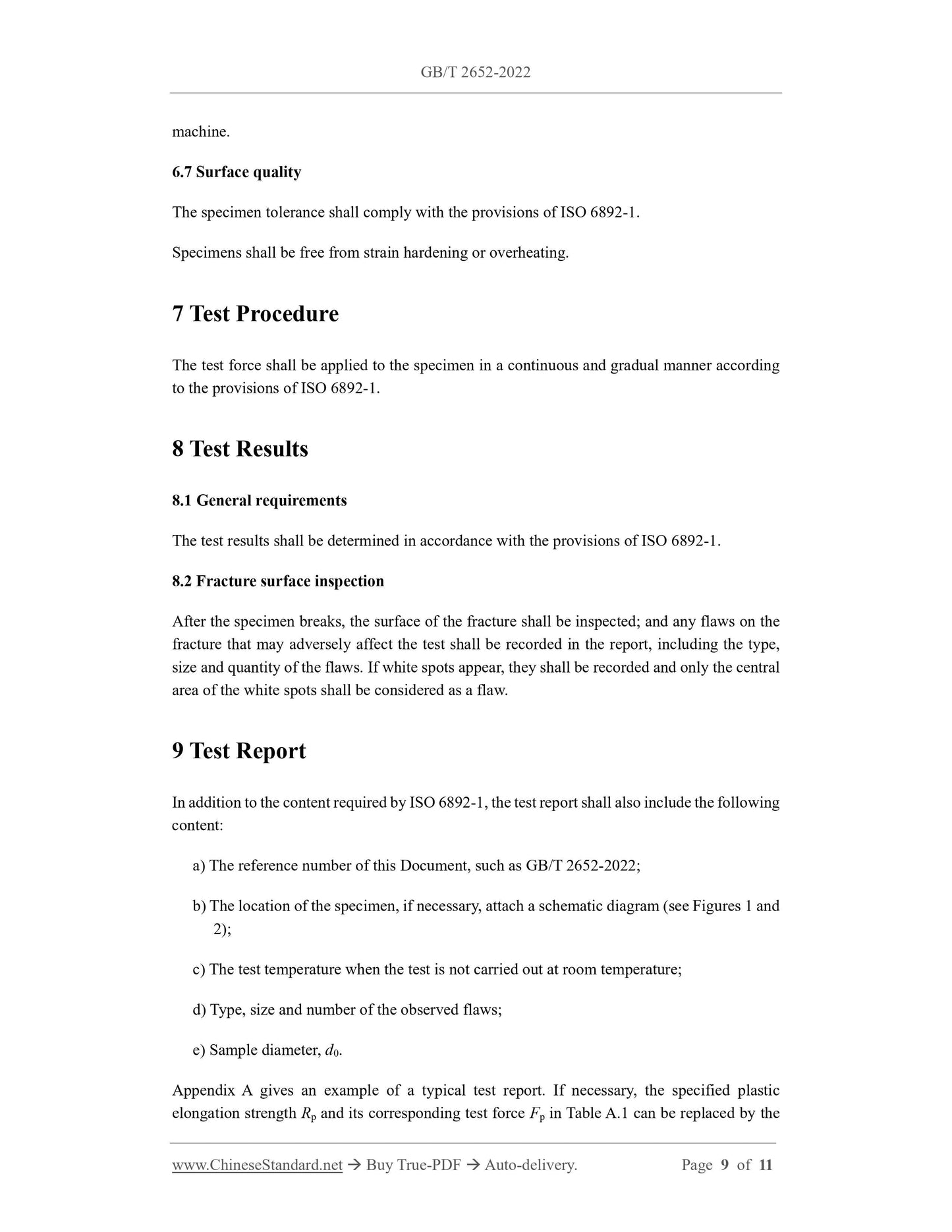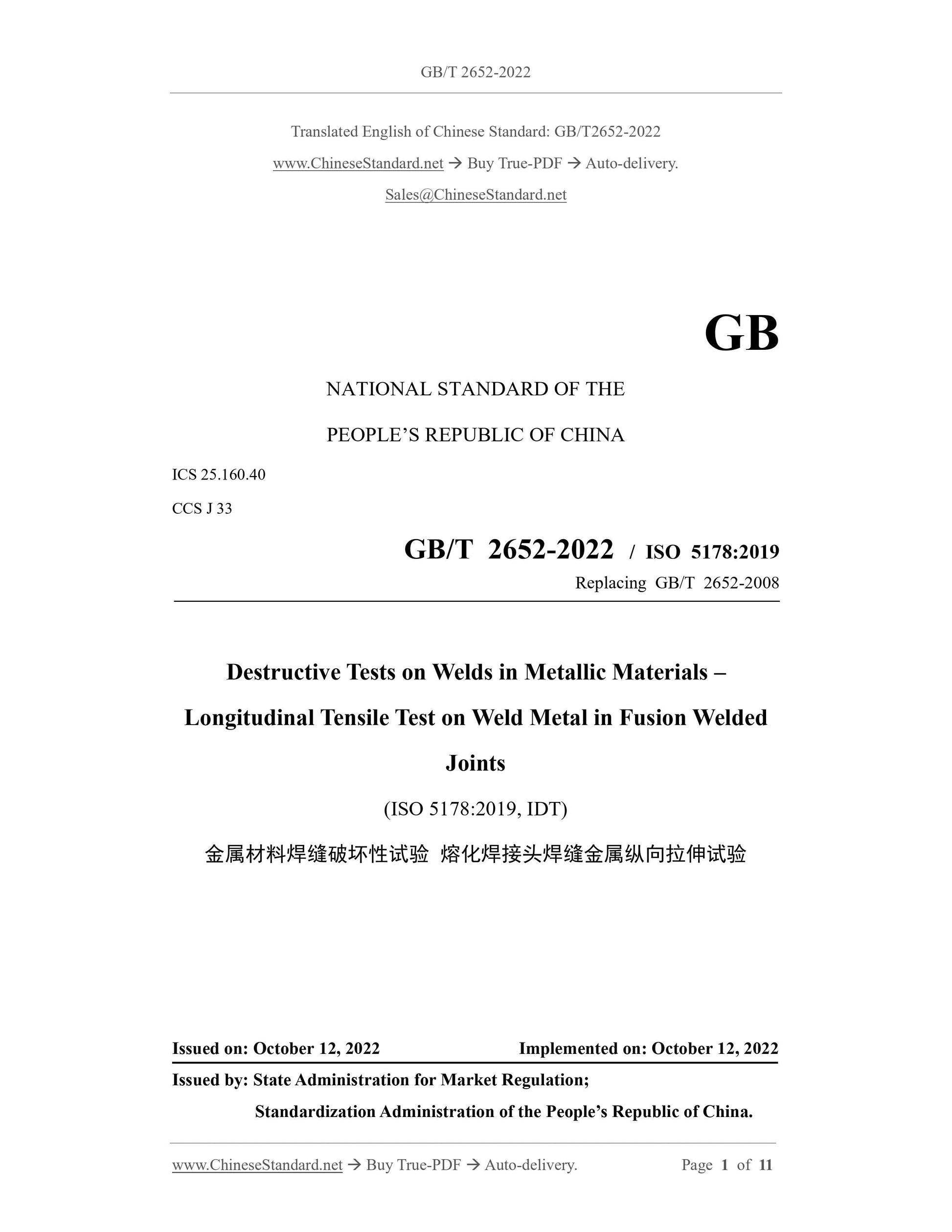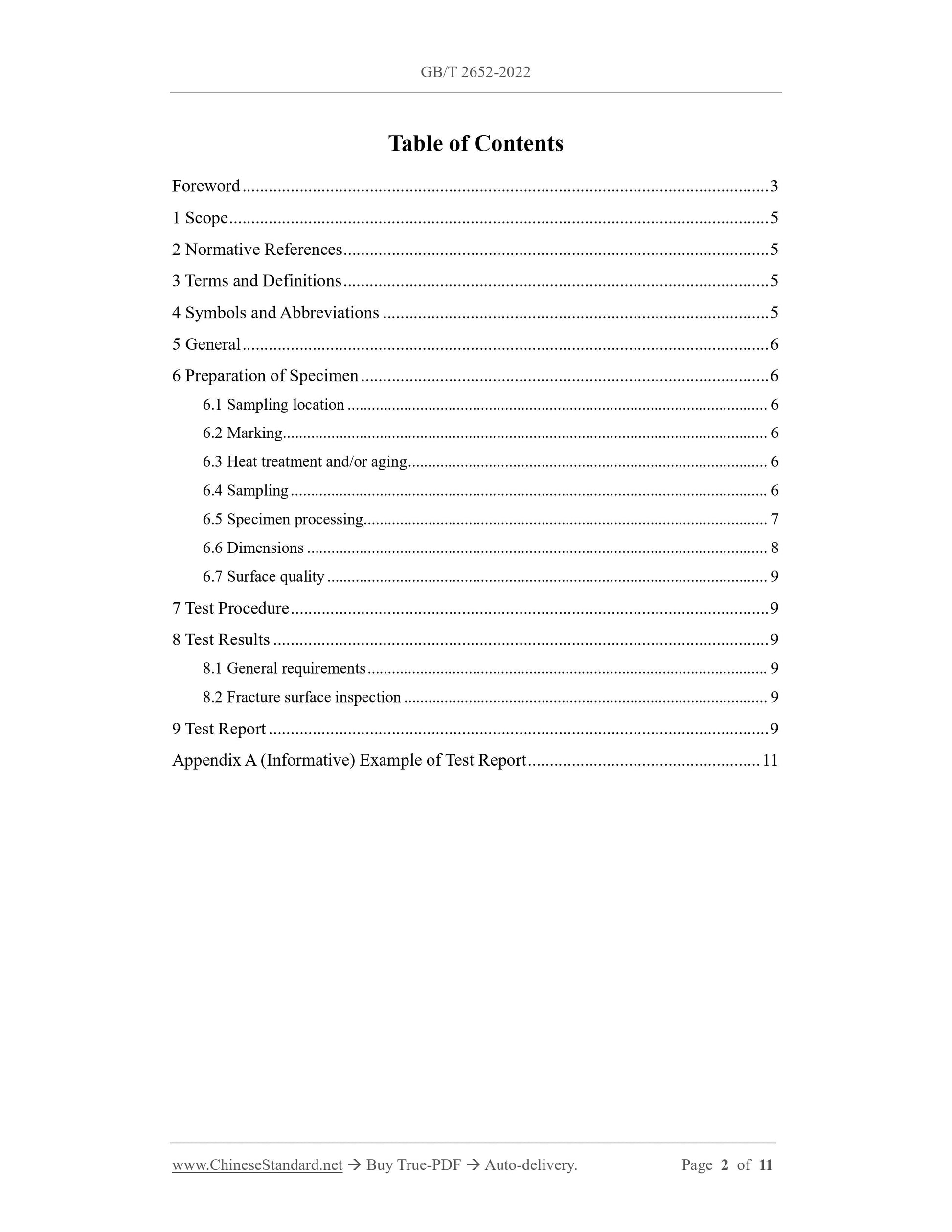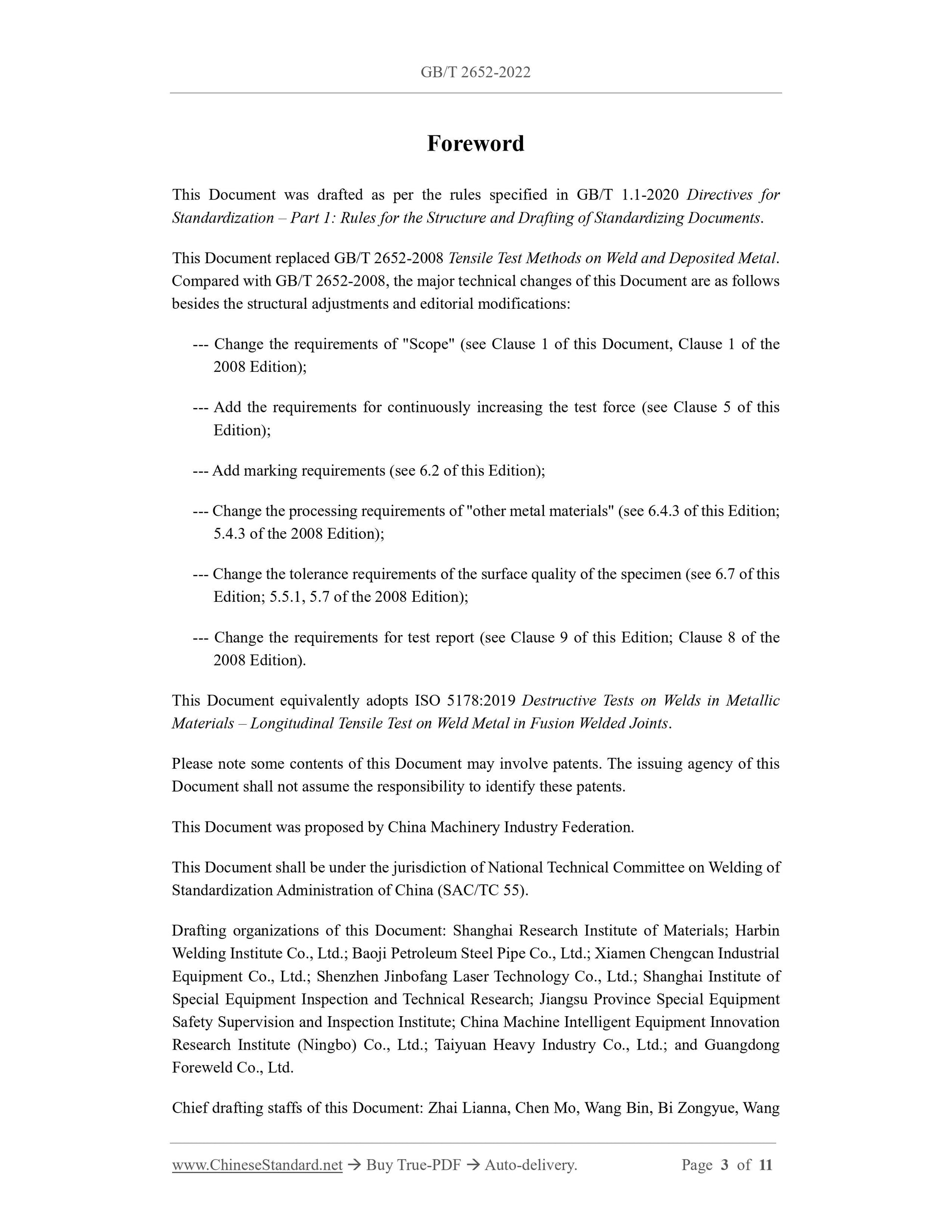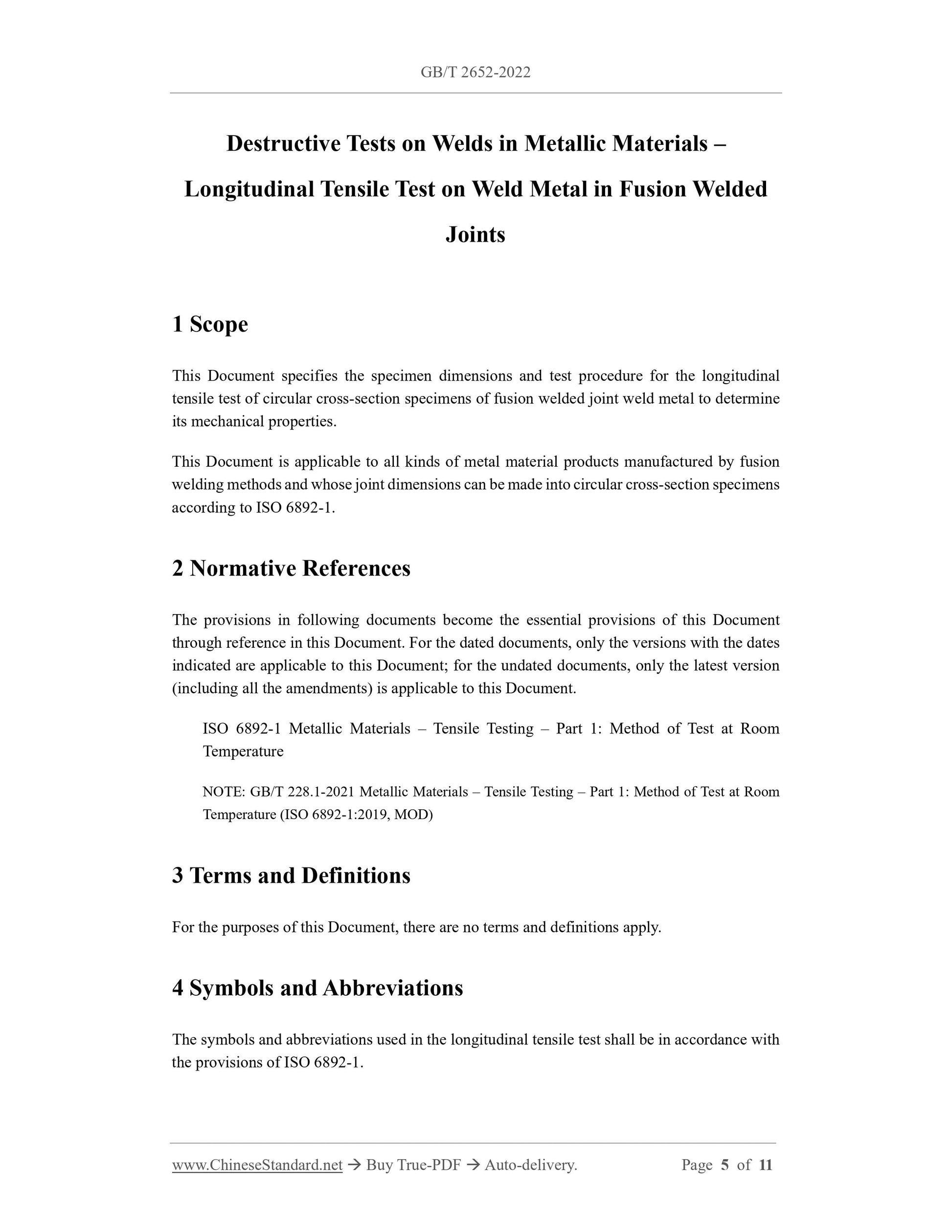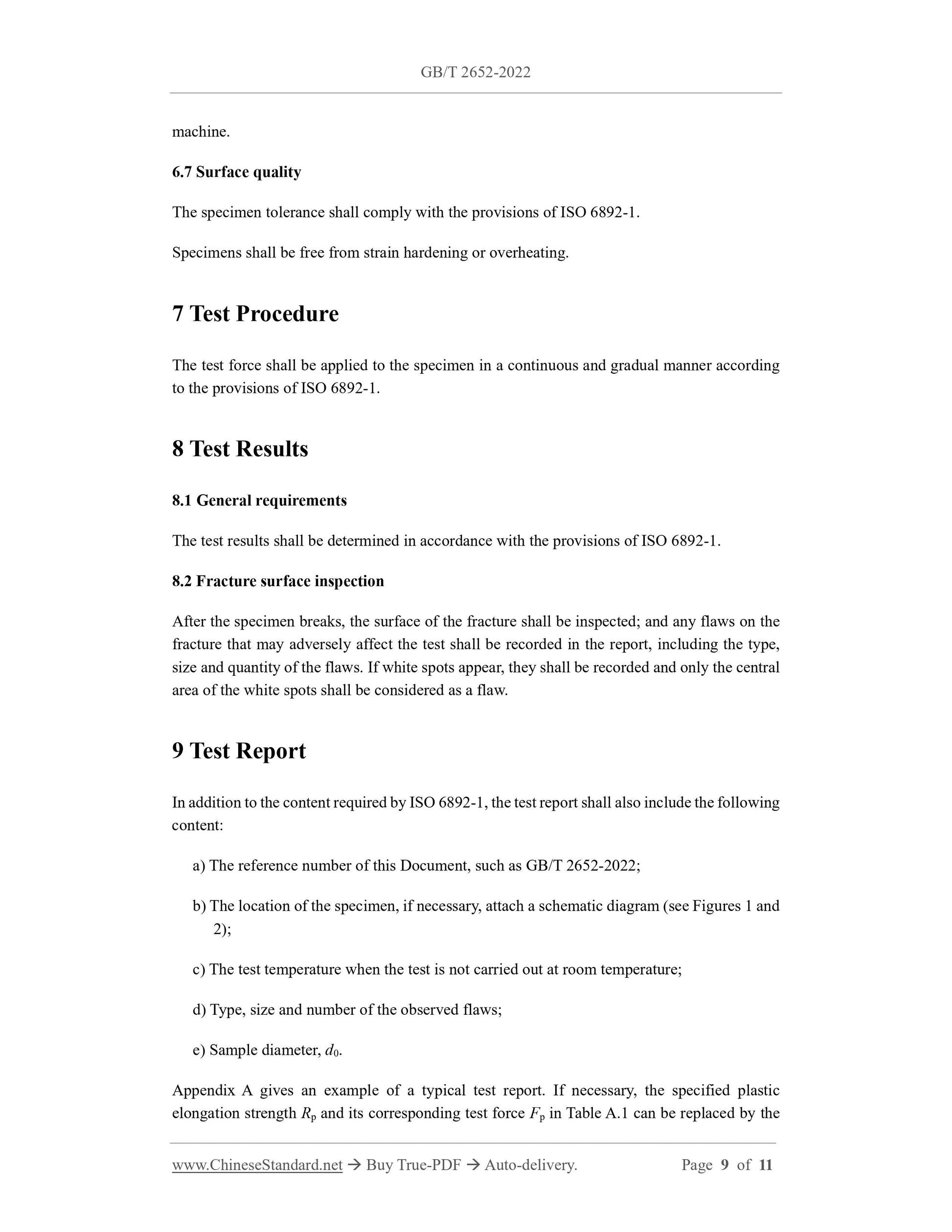1
/
of
5
www.ChineseStandard.us -- Field Test Asia Pte. Ltd.
GB/T 2652-2022 English PDF (GB/T2652-2022)
GB/T 2652-2022 English PDF (GB/T2652-2022)
Regular price
$125.00
Regular price
Sale price
$125.00
Unit price
/
per
Shipping calculated at checkout.
Couldn't load pickup availability
GB/T 2652-2022: Destructive tests on welds in metallic materials - Longitudinal tensile test on weld metal in fusion welded joints
Delivery: 9 seconds. Download (and Email) true-PDF + Invoice.Get Quotation: Click GB/T 2652-2022 (Self-service in 1-minute)
Newer / historical versions: GB/T 2652-2022
Preview True-PDF
Scope
This Document specifies the specimen dimensions and test procedure for the longitudinaltensile test of circular cross-section specimens of fusion welded joint weld metal to determine
its mechanical properties.
This Document is applicable to all kinds of metal material products manufactured by fusion
welding methods and whose joint dimensions can be made into circular cross-section specimens
according to ISO 6892-1.
Basic Data
| Standard ID | GB/T 2652-2022 (GB/T2652-2022) |
| Description (Translated English) | Destructive tests on welds in metallic materials - Longitudinal tensile test on weld metal in fusion welded joints |
| Sector / Industry | National Standard (Recommended) |
| Classification of Chinese Standard | J33 |
| Classification of International Standard | 25.160.40 |
| Word Count Estimation | 10,137 |
| Date of Issue | 2022-10-12 |
| Date of Implementation | 2022-10-12 |
| Older Standard (superseded by this standard) | GB/T 2652-2008 |
| Issuing agency(ies) | State Administration for Market Regulation, China National Standardization Administration |
Share
